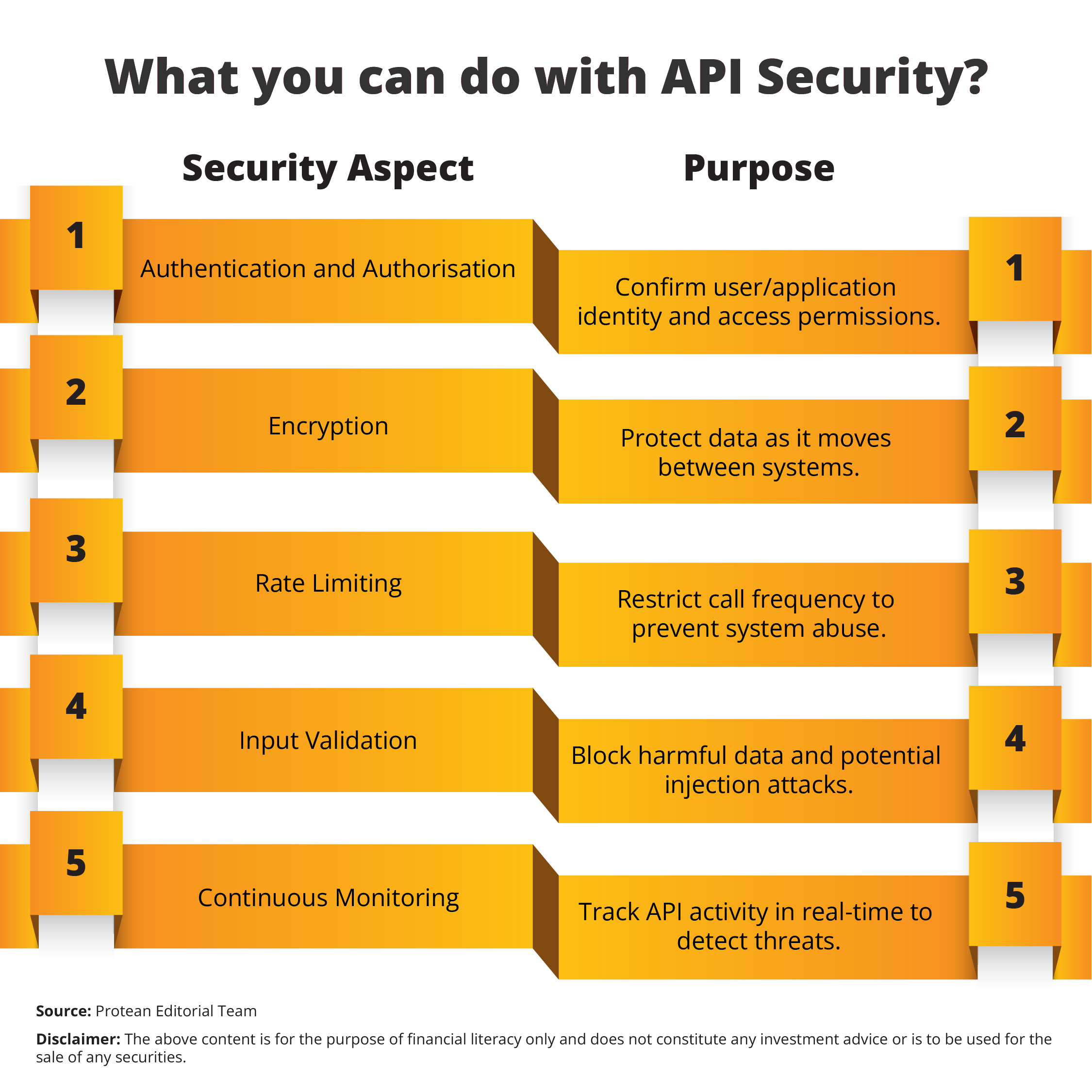Are you thinking about API security?
Today, Application Programming Interfaces (APIs) have become the backbone of digital change.
They can:
- Enabling seamless customer experiences
- Support internal automation
- Helping businesses operate, innovate and scale
But as the reliance on APIs is growing, so can the risk.
What is API Security?
API security is:
- A set of policies, practices, and tools
- Used to prevent malicious attacks, misuse, and unauthorised access to APIs
API security is more robust than the traditional network security. This is because of its focus on securing the very interfaces that can allow applications and services to communicate.
With API security you can can do the following:

Escalating Threats and Evolving Landscape
APIs are everywhere. They’re present in:
- Mobile apps,
- SaaS platforms,
- Backend integrations,
- Third-party partnerships,
- IoT ecosystems.
This phenomenon, often referred to as API sprawl. It can create blind spots that traditional security tools are not equipped to handle.
Furthermore, API-specific attacks can exploit flaws like improper authorisation checks, excessive data exposure, or insecure endpoints.
The 2023 OWASP API Security Top 10 has highlighted several such risks like:
- Broken Object Level Authorisation (BOLA)
- Mass Assignment Vulnerabilities
The implications of these risks can be:
- Potential data breaches of massive scale
- Business disruption
- Irreversible reputational harm.
In sectors like banking, healthcare, and telecom, a single API security-related incident can:
- Expose sensitive customer data
- Erode trust
- Invite regulatory scrutiny
But is API security a business-related regulatory concern?
Absolutely yes!
Across jurisdictions, data privacy and security standards are becoming more stringent. The General Data Protection Regulation (GDPR) in Europe and California Consumer Privacy Act (CCPA) in the U.S. can be well-known examples.
India’s Digital Personal Data Protection Act (DPDP Act), 2023 has mandated enterprises to implement robust safeguards when:
- Collecting
- Processing
- Storing personal data.
Under this Act, API security failures like unauthorised access or excessive data collection, can be deemed violations, exposing organisations to penalties, lawsuits, and loss of data fiduciary status.
Therefore, API security is a boardroom concern. It is intricately tied to business continuity, regulatory compliance, and long-term resilience.
Main Pillars of Enterprise API Security
If businesses want to focus on digital maturity, they need to embed API security into their system’s DNA.
Here are the two API security pillars in focus:
1. Proactive Measures and API Security Best Practices
Here are some API security best practices that you can follow:
- Zero Trust Architecture to assume every API request could be malicious unless authenticated and authorised.
- OAuth 2.0 and OpenID Connect to use modern authentication protocols to manage secure access.
- Least Privilege Principle to grant only the minimum access needed to perform a function.
- Data Minimisation to avoid returning excessive data-structure API responses carefully.
- Versioning and Deprecation Controls to ensure that outdated APIs are retired securely.
- API Gateways and WAFs to deploy intelligent gateways that enforce security policies, rate limits, and request validation.
Embedding security governance in API lifecycle management is critical.
With this businesses can ascertain that:
- Their developers are trained in secure coding practices
- Their security teams are involved right from the API design phase, not just after deployment.
2. Continuous Vigilance and API Security Testing
API security testing needs to be continuous and adaptive. Here’s what can help businesses improve API security:
- Automated Vulnerability Scans that include tools that test for OWASP API Top 10 vulnerabilities.
- Penetration Testing for regular ethical hacking of APIs to simulate real-world attack scenarios.
- Runtime Protection to monitor live API traffic for anomalies, abuse patterns, and suspicious behavior.
- Audit Logging and Traceability to maintain detailed logs of API access and errors to enable forensic analysis.
Modern businesses can integrate security testing into early development cycles (CI/CD pipelines) while also maintaining runtime visibility.
- Organisations need to map their API inventories
- Ensure visibility into every internal and external API (including third-party and partner integrations)
- Account for risks due to unmanaged or “shadow APIs”
- Adopt a shift-left strategy
Protean’s API is purpose-built for India’s digital ecosystem. Click here for more.
Conclusion
API security is a strategic function that can influence an organisation’s:
- Financial health
- Regulatory standing
- Digital credibility.
In an era where APIs are gateways to critical business functions and customer data, securing them is non-negotiable. As your enterprise leans deeper into digital transformation, you can remember this simple principle: “securing your APIs is securing your future in the digital economy.”

